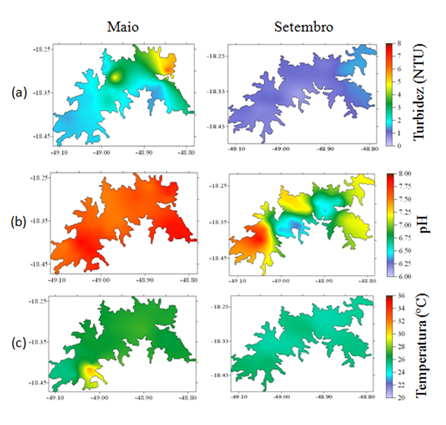Carbon and Nitrogen in the Lower Basin of the Paraíba do Sul River, Southeastern Brazil: Element fluxes and biogeochemical processes
Keywords:
agriculture, anthropic impacts, biogeochemistry, fluvial loads, river basin
Abstract
The study was conducted in the lower basin of the Paraíba do Sul River (PSR), in which 57,000 km2 of the basin is located in the Brazilian states of São Paulo, Minas Gerais and Rio de Janeiro. We proposed to identify the main sources of C and N fluxes in the PSR waters, to evaluate biogeochemical processes in the watershed, and to estimate C and N riverine loads to the Atlantic Ocean in the context of the sugarcane plantation expansion for ethanol production. Riverine water samples were collected at seven stations along 12 months. Physicochemical and limnological parameters, as well as discharge, were measured together with organic and inorganic C and N species in the dissolved and suspended particulate material. C and N concentrations in bed fluvial sediments, and suspended particulate material were measured, and their elemental ([C:N]a) and isotopic (δ13C) compositions were compared with the [C:N]a and δ13C of the following sources: riparian soils, insular flooded soils, aquatic macrophytes, phytoplankton, pasture grass, sugarcane, sugarcane byproducts, and forest litterfall. Temporal patterns in the physicochemical and limnological environment were correlated to discharge. It also was observed that sugar cane production can increase riverine C and N fluxes. Riparian soils inputs were larger than insular soils, which was likely to act as a biogeochemical barrier. Effects of the macrophytes on riverine C and N were unclear, as well as urban sewage disposal effects. Although the PSR loads represented a very small percentage of the fluvial input to global biogeochemical cycles, we suggest that this and other medium sized watersheds in Eastern and Southeastern South America can be significant contributors to the continental biogeochemical riverine loads to the ocean, if their loads are considered together.
Published
19/08/2011
Issue
Section
Papers
Authors maintain the copyrights for their work. However, they grant rights of first publication to Ambiente e Agua - An Interdisciplinary Journal of Applied Science. In compensation, the journal can transfer the copyrights, allowing non-commercial use of the article including the right of sending the article to other data bases or publication media. The journal uses the CC BY 4.0 license"






